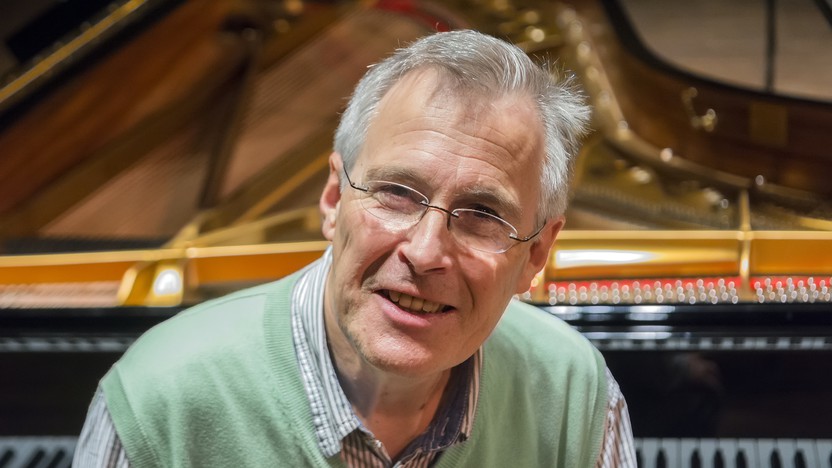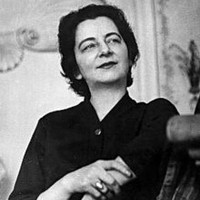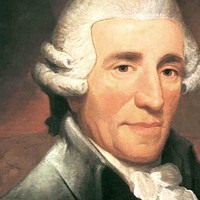Celebrating Christian Zacharias: Chopin's Second Piano Concerto

Sponsored By
- May 13, 2016

- May 14, 2016


Sponsored By


 Watch Video
Watch Video
Grazyna Bacewicz was one of the most influential Polish musicians in the twentieth century. Besides her work as a composer, drawing on studies in Paris with the legendary Nadia Boulanger, Bacewicz was a top-tier concert violinist who led the Polish Radio Orchestra for a time, and also a pianist known for interpreting her own works. She even wrote novels and short stories, and late in life she embraced teaching. Her most celebrated compositions, including the Concerto for String Orchestra from 1948, unite a performer’s sensitivity to instrumental tone production with a bright neoclassical language (or really neo-Baroque in this case, drawing more on Bach than Mozart). When the Concerto was first performed in 1950 at the General Assembly of the Polish Composers’ Union, a critic and fellow union member wrote, “It can be said in all honesty that the honor of Polish composers was saved this time by a woman, Grazyna Bacewicz. … We finally felt a ‘red-blooded piece’ of wholesome and delicious music written with a creative power that is truly virile.”
Aaron Grad ©2019
 Listen to Audio
Listen to Audio
Franz Joseph Haydn became a court composer for Austria’s wealthy Esterhazy family in 1761, and four years later he was put in charge of all the court’s vast musical activities. His patron, Prince Nikolaus Esterhazy, was an avid musician and a true supporter of the arts, but he kept his Kapellmeister on a tight leash, especially during the long stretches of time spent at an isolated summer palace where the musicians had to produce an endless stream of operas and other entertainment. Under those demands, Haydn later wrote, “I was forced to become original.”
In 1779, Haydn negotiated a new contract that gave him more leeway to compose and publish independently, and soon his music was attracting followers throughout Europe. One foreign admirer was a young French count, Claude-François-Marie Rigolet, who commissioned six symphonies that Haydn composed in 1785 and 1786. These “Paris” Symphonies earned Haydn the handsome sum of 25 louis d’or each, plus additional fees for publication. (By comparison, Wolfgang Amadeus Mozart earned only 5 louis d’or for his “Paris” Symphony from 1778.) The Symphony No. 82, though published as the first in the sequence of the “Paris” Symphonies, was actually the last Haydn composed.
Haydn’s “Paris” symphonies capitalized on the large orchestra employed for the Concerts de la Loge Olympique, an ensemble that far outnumbered the private Esterhazy ensemble. It must have had quite an impact when the orchestra struck up the first performance of the Symphony No. 82 in 1787, conducted by its famous mixed-race maestro, Joseph Bologne, Chevalier de Saint-Georges. In the symphony’s first measures, the entire orchestra enters at a fortissimo dynamic, climbing up an arpeggio that defines the home key of C major. The timpani drums add potent force to the opening, repeating a rousing rat-a-tat-tat-tat rhythm. The secondary material, by contrast, enters with all bass instruments silenced except for a lone bassoon, creating an unusually airy texture and foreshadowing the droning bass of the symphony’s finale.
The second movement, an Allegretto, is quite quick and mischievous for a symphonic slow movement. Again there are gaps and delays in the bass line, as well as dramatic exchanges between loud and soft phrases. In the minuet, an oboe caps each stout phrase with a dainty solo, and isolated woodwinds have prominent roles in the contrasting trio section.
This symphony owes its nickname, “The Bear,” to the Vivace finale. The name was not Haydn’s choosing; it was added posthumously, as a reference to the rustic droning figure that appears throughout the movement. Apparently, this sound reminded audiences of the street music played on bagpipes and other folk instruments to accompany the dancing of tamed bears.
Aaron Grad ©2022
 Listen to Audio
Listen to Audio
Chopin was not yet twenty when he completed his Piano Concerto in F Minor. Though it was the first of his two piano concerti, it was published second and thus designated his Piano Concerto No. 2. (Chopin set to work on his Concerto “No. 1” in E Minor shortly following the F Minor’s premiere.)
Both concerti, merely by virtue of their existence, inevitably invite comparison to the piano concerti of Mozart and Beethoven, at that time the genre’s definitive works. Measured by that standard, Chopin’s concerti routinely fail to satisfy—but this is a misguided criterion. Chopin’s concerti do not strive to create the cogent musical drama of Mozart’s and Beethoven’s, with their Jungian archetypal soloists navigating a rich cosmos manifested by the orchestra. Chopin’s F Minor Concerto (and likewise its E Minor sibling) is a piano concerto in the most truly Romantic sense: it is a soloist vehicle, an unabashed celebration of pianistic virtuosity. The stile brillante of Hummel, Weber, and others offers a more accurate lens on Chopin’s concerti—viewed through which, even these youthful works must be regarded among the finest of their kind. (Robert Schumann surmised that “if a genius such as Mozart were to appear today, he would write Chopin concertos rather than Mozart ones.”)
The Concerto comprises three movements. The opening Maestoso is a heady portrait of nineteenth-century Sturm und Drang. A Larghetto of breathtaking loveliness follows. In each of these, Chopin places the piano prominently in the foreground, but particularly in the slow movement, where the orchestra often provides little more than a translucent halo around the soloist’s ecstatic flourishes. This heartfelt rhapsody was inspired by a young singer, Constantia Gladkowska, who had charmed Chopin. “I have … found my ideal,” the composer wrote to a friend, “whom I worship faithfully and sincerely. … But in the six months since I first saw her I have not exchanged a syllable with her of whom I dream every night, she who was in my mind when I composed [the Larghetto].” Notwithstanding the ardor of the slow movement, Chopin saves arguably his most personal statement for the finale, a brilliant Allegretto vivace whose rhythmic character draws from the mazurka, a folk dance from the composer’s native Poland.
Patrick Castillo ©2016
SPECIAL PRE-CONCERT PERFORMANCE BY THE 2016 SPCO YOUTH CHAMBER MUSIC COMPETITION WINNERS ON MAY 13
The winners of the 2016 SPCO Youth Chamber Music Competition, the Vesper Quartet, will perform in the Marzitelli Foyer of the Ordway Center during Fanfare preceding the Friday, May 13 performance of Celebrating Christian Zacharias: Chopin’s Second Piano Concerto. The members of the quartet are Vivian Murphy (violin), Addison Nichols (violin), John-Paul Shoemaker (viola), and Kajsa Johansson (cello). They will be performing the first movement of Prokofiev’s String Quartet No. 2 in F Major: Allegro Sostenuto.
The annual competition is sponsored and coordinated by the Friends of the Saint Paul Chamber Orchestra, the volunteer organization that supports The SPCO through educational, social and fundraising activities. Partnering with them are MNSOTA (Minnesota String and Orchestra Teachers Association), and MacPhail Center for Music. To learn more about the competition and to hear the rest of this year's winners, visit www.spco-ycmc.org.
Get driving directions and find nearby parking.
Find dining options close to the venue.
View seating charts to find out where you'll be seating.
SPCO concerts are made possible by audience contributions.
For exclusive discounts, behind-the-scenes info, and more:
Sign up for our email club!
